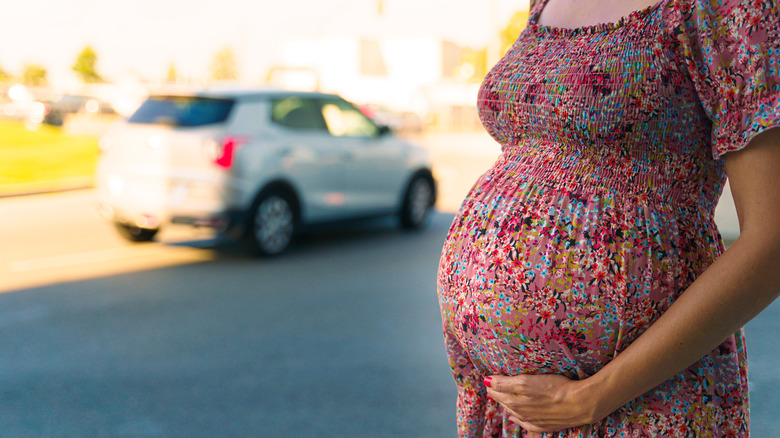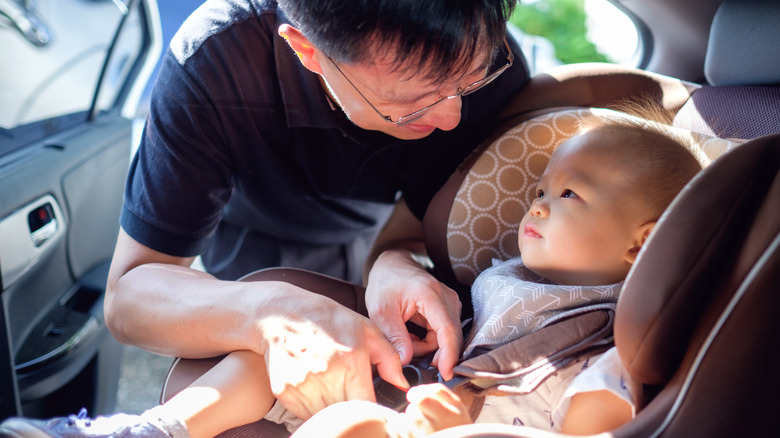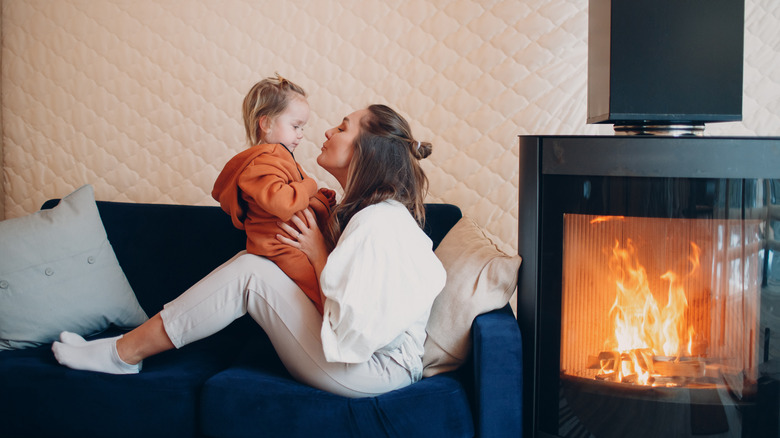The Possible Link Between SIDS And Air Pollution
Sudden infant death syndrome (SIDS) is one of the scariest and most tragic things that can happen to little ones. According to Mayo Clinic, SIDS is the unexplained death of an infant and since it often occurs when babies are asleep in their beds, it is sometimes colloquially called crib death. While the exact cause of SIDS and reason for seemingly spontaneous infant deaths is still unknown, there have been several factors identified as contributing to a higher risk for SIDS, including environmental factors encompassing air quality and pollution.
In the United States, approximately 2,300 babies die of SIDS each year (per Boston Children's Hospital). Over 90% of SIDS deaths occur in babies six months of age or younger, with the highest numbers affecting babies between one and four months, though SIDS can affect children up to 12 months old. Sadly, SIDS is the number one cause of infant deaths between one month and one year of age, otherwise known as the postneonatal period. Usually, babies who die of SIDS appear to be healthy prior to succumbing to SIDS, and as researchers continue to look for a cause and cure, it's important to be informed on risk factors and steps to take to hopefully mitigate the possibility of SIDS. One way to potentially decrease your baby's risk of SIDS is to be aware of air pollutants that can harm your infant and that may increase the possibility of sudden death.
Environmental risk factors for SIDS
Several environmental risk factors have been identified by researchers as increasing the risk of SIDS (per WebMD). These include air pollutants like sulfur dioxide, carbon monoxide, and nitrogen dioxide. In a 2004 study in Pediatrics, a baby's exposure to elevated amounts of these three chemicals in the day prior to SIDS death was found to be directly correlated. Per the United States Environmental Protection Agency (EPA), carbon monoxide, or CO, is a clear, odorless gas that is emitted when something is burning, but the most prevalent source of CO comes from vehicles that run on fossil fuels. Gas stoves are another common source of carbon monoxide. Even though most homes are equipped with CO detectors, spending time outside near cars, being in a vehicle for extended periods of time, or exposure to poor air quality from traffic or factories can increase the amount of harmful gases in your baby's lungs.
A 2019 study published in the International Journal of Environmental Research and Public Health reaffirmed the correlation between SIDS and exposure to these three gases. The researchers of the study found that preterm infants exposed to particulate matter (PM) of 10 micrometers or less of these gases were more likely to pass away from SIDS. Particulate matter is a form of particle pollution composed of a mix of microscopic liquid and solid particles that can enter through the nose and mouth, then settle deep in the lungs (per the California Air Resources Board).
Ways to prevent SIDS
Given that the exact cause of SIDS is unknown, it's difficult to say exactly how you can protect your little one. However, there are many recommendations that are proven to decrease the risk of SIDS. Mayo Clinic recommends always placing your baby on their back when they sleep, and keeping their crib or sleeping space free from pillows, blankets, toys, and other items that could pose a suffocation threat. Instead of blankets, you can keep your baby warm using a sleep sack, but never cover their head while they're sleeping.
To protect your infant from harmful environmental pollutants, make certain that your home has at least one working carbon monoxide detector on each floor (via Healthy Children). If the carbon monoxide detector is battery operated, you should plan to change the batteries every six months to keep the batteries fresh and active. Be careful not to expose babies to propane, outdoor grills, gas stoves, gas dryers, fireplaces, or space heaters, and limit exposure to fumes from cars, including your own vehicle. When utilizing gas-powered appliances at home, make sure that there is plenty of proper ventilation and that your infant is kept away from the area where fuel is being burned since harmful gases are emitted during the burning process. If you live in an area with wildfires or poor air quality, take your baby to an indoor space with clean air, which can be enhanced by using an air purifier (per Healthy Children).



